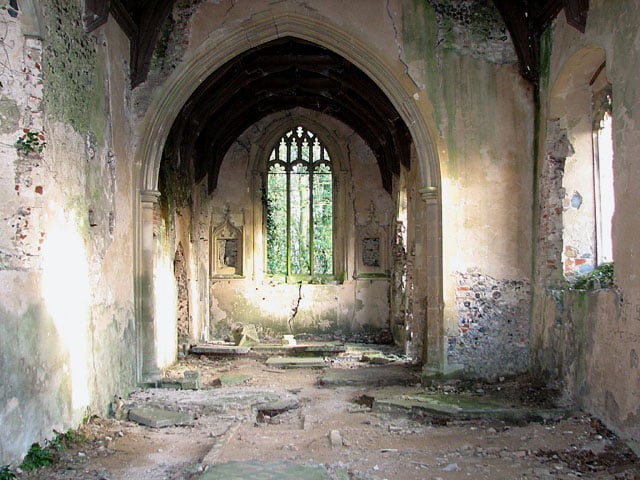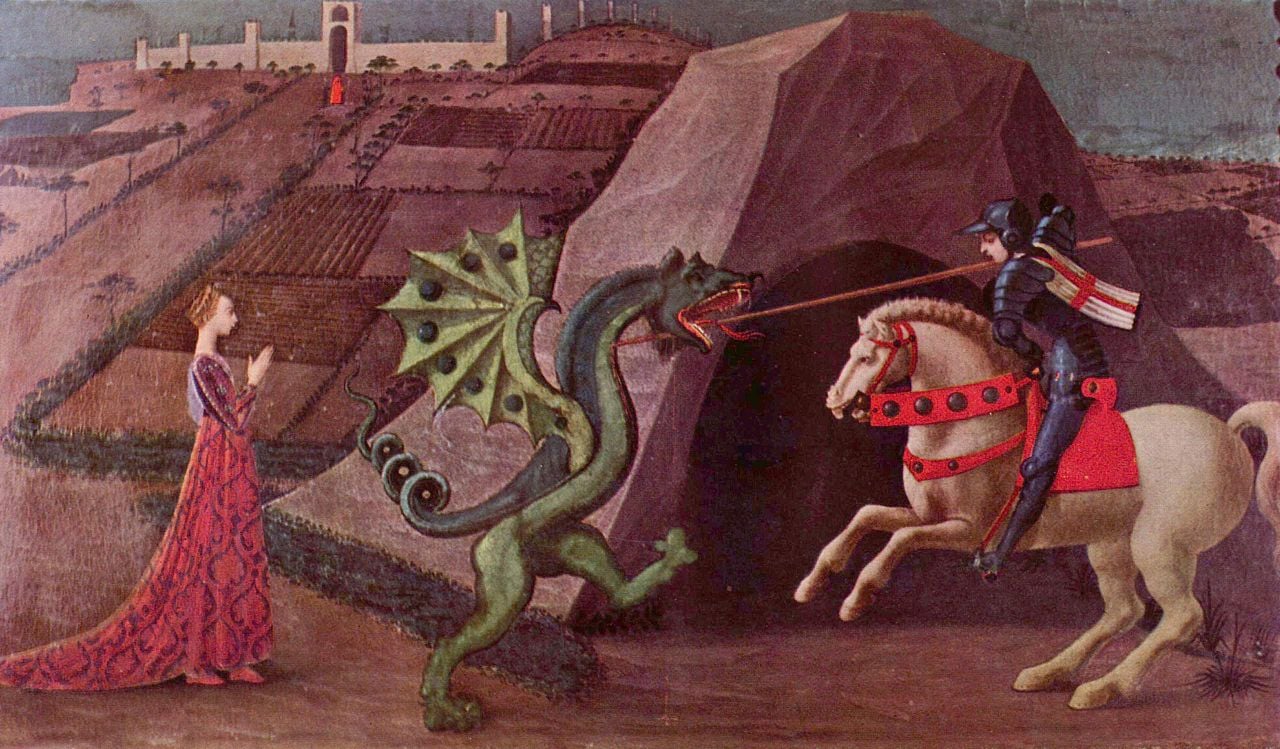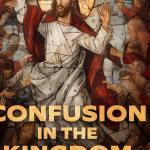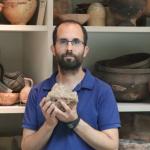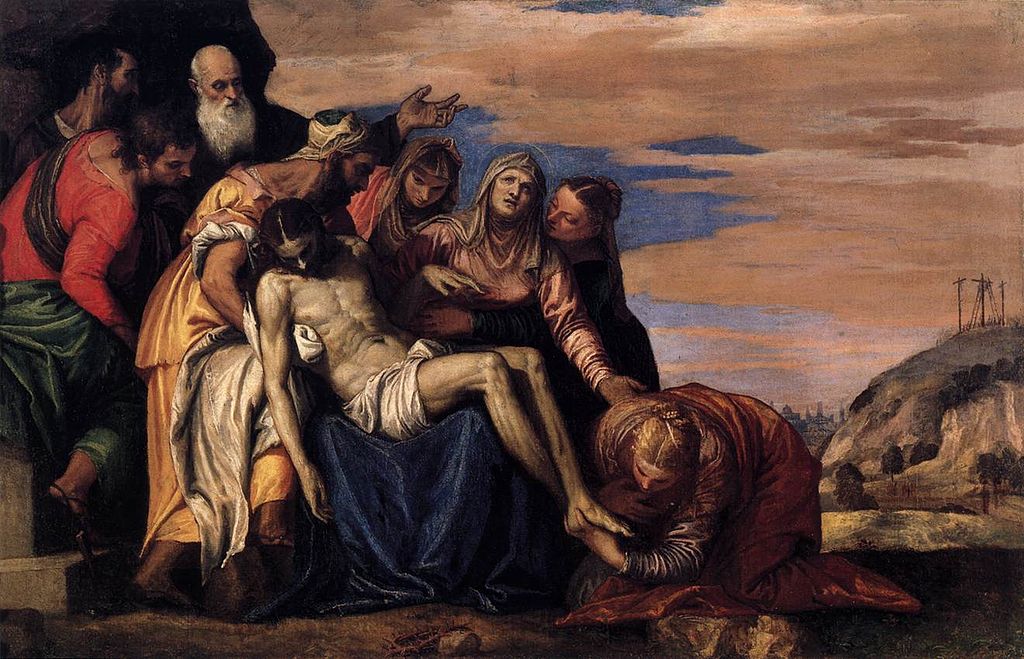
[John Paul II intended his first encyclical Redemptor Hominis (Redeemer of man) to be “a great hymn of joy for the fact that man has been redeemed through Christ—redeemed in spirit and in body.” JPII titled his Theology of the Body “Male and female He created them,” but perhaps it would be better, he reflects in Crossing the Threshold of Hope, to say: “Male and female He redeemed them.”]
While Holy Thursday and Good Friday can be days of great sadness for most Christians, the emotion I feel most acutely year after year is regret. During the Gospel reading on Palm Sunday, the memory of sin and failed Lenten promises takes on a whole new meaning while we shout, “Crucify Him, Crucify Him!” with the crowd. Yet a week later, not much has changed.
Last year at this time, I had the privilege of posting my first essay on this blog, Suffering, Sexuality, and the Cross: John Paul II and Walker Percy on the Culture of Death, in which I tried to understand the form of humanism that is characterized by scientific rationalism and love of mankind (but not of persons) and its relation to the systematized killing that rears its ugly head time after time in the modern age. This form of evil can often seem distant and external, but its seeds are all around us. The regret we feel on Good Friday is evidence that these seeds lie even in our own hearts, and we have the choice to spread them wherever we walk, or to root them out at their source.
In arguably one of the most important novels of the twentieth century, The Gulag Archipelago, Aleksandr Solzhenitsyn narrates his own discovery of this reality while imprisoned in one of the Soviet Union’s gulags, their brutal labor camps meant to brainwash any citizen with thoughts that ran contrary to the aims of the Communist Party. Amidst this evil—this darkness that engulfs a man and strips him of everything—Solzhenitsyn came to love the gulag for the knowledge it gave him about himself, mankind, and God. Reflecting on his past life as a professing Communist and army officer, he rejoices in his years of imprisonment, for only as he “lay there on rotting prison straw” could he see the world with clarity:
Gradually it was disclosed to me that the line separating good and evil passes not through states, nor between classes, nor between political parties either—but right through every human heart—and through all human hearts. This line shifts. Inside us, it oscillates with the years. And even within hearts overwhelmed by evil, one small bridgehead of good is retained. And even in the best of all hearts, there remains…an unuprooted small corner of evil.
The truth of all religions of the world, he goes on, is their struggle with the evil inside every human being, for “it is impossible to expel evil from the world in its entirety, but it is possible to constrict it within each person.”
This type of discovery hits even closer to home in Nathaniel Hawthorne’s short story “The Minister’s Black Veil” when the comfortable, everyday life of a small Puritan community is disrupted by the minister’s sudden wardrobe transformation: a black crape veil that hangs over his face and perhaps even his soul. Father Hooper is a sufferer of secret sin, so he goes about wearing the awful black veil as an outward sign for the remainder of his life. As he lays dying, another minister attempts to remove it, yet is astounded when the weakened Father Hooper clutches it tightly to his face: “Never! On earth, never!”
Those gathered around his deathbed are terrified by his appearance, yet it is his words that cause them to shrink away even from each other:
“Why do you tremble at me alone?” cried he, turning his veiled face round the circle of pale spectators. “Tremble also at each other! Have men avoided me, and women shown no pity, and children screamed and fled, only for my black veil? What, but the mystery which it obscurely typifies, has made this piece of crape so awful? When the friend shows his inmost heart to his friend; the lover to his best-beloved; when man does not vainly shrink from the eye of his Creator, loathsomely treasuring up the secret of his sin; then deem me a monster, for the symbol beneath which I have lived, and die! I look around me, and lo! on every visage a black veil!”
Both Solzhenitsyn and Hawthorne’s minister are cast into a deep awareness of the disfigurement that sin causes to the soul, but this is not a realization that can come to just any man on a normal, sunny day. For this reason, the Church leads us through the rich traditions surrounding Holy Week, specifically the Tenebrae service. By now, the liturgical season of Lent is over. We have had our chance to respond to Christ’s call for metanoia, for a transformation of heart. Yet every year we feel regret for the countless times we have turned our backs to Him instead of our hearts.
Taken from the Latin for ‘darkness’ or ‘shadows,’ Tenebrae is the song of mourning for the Church’s betrayed, crucified, and buried Bridegroom. Enveloped by chanting, we watch as the candles that light the church are snuffed out, one by one, until we are left in silence and blackness—alone with the sin that killed our Messiah. Stripped of everything, we now face the same choice as the Apostles in the Garden of Gethsemane: do we fall asleep in weariness and despair, or can we bear to stand guard over our souls for one more hour? Do we run in self-condemnation with Judas, or do we stay with Peter to accept God’s mercy?
To hang or to hope?
In the Second Nocturne of Tenebrae, we read from St. Augustine’s Expositions on the Book of Psalms:
“Hear my prayer, O God, and despise not my petition; attend to me and hear me.” These are the words of a man in trouble, of one who is afflicted. In his sore distress he prays to be delivered from his misery. Do not think that bad men are in this world without a purpose, and that God does not work good out of them. Every wicked man lives, either that he himself may be corrected, or that through him some good man may be tried…Nevertheless, so long as they try us, let us not hate them, because we cannot tell if they will persevere in their wickedness to the end. Often enough, while hating, as we think, an enemy, we are, without knowing it, hating a brother.
These words should take on special meaning for us in this Year of Mercy, for it is within the deepest darkness that our need for God’s mercy becomes most apparent—and with that offer of mercy also comes Christ’s command to extend it to others.
We are faced with a choice that is well-articulated by Flannery O’Connor’s most famous wicked man, The Misfit. At the end of her story “A Good Man is Hard to Find,” the mischievous, somewhat self-righteous grandmother has caused her equally-distasteful family to wreck their car into a ditch, where they encounter an escaped serial killer. As his cronies shoot the grandmother’s family in the woods behind her, The Misfit reflects on her pleas for mercy, her cries to Jesus, and his own path to wickedness:
“Jesus was the only One that ever raised the dead,” The Misfit continued, “and He shouldn’t have done it. He thrown everything off balance. If He did what He said, then it’s nothing for you to do but throw away everything and follow Him, and if He didn’t, then it’s nothing for you to do but enjoy the few minutes you got left the best way you can—by killing somebody or burning down his house or doing some other meanness to him. No pleasure but meanness.”
In the final moment of her life, the grandmother looks upon The Misfit’s face, twisted and on the verge of tears for not knowing whether Jesus really did raise the dead or not. “Listen lady,” he says, “if I had of been there I would of known and I wouldn’t be like I am now.” In this instance, the grandmother sees the wicked man as her brother: “Why you’re one of my babies,” she reaches out to touch his shoulder, “you’re one of my own children!”
The story seems to end in tragedy when The Misfit springs up and shoots her three times through the chest. “She would have been a good woman,” he observes, “if it had been somebody there to shoot her every minute of her life.” Yet in her last moments, the grandmother truly fulfilled Christ’s mandatum, looking evil in the face and choosing love.
Like Solzhenitsyn, Father Hooper, and O’Connor’s grandmother, if we were to encounter evil in its cruelest form every day, we might find it easier to be good. When our life is endangered, when we are no longer preoccupied with our own neediness, when there is nothing but blackness, then maybe we would see even a bad man as our brother. Let us then make Good Friday our gulag, our black veil, and our Misfit as we prepare to receive God’s mercy.
***
Anna Pfaff is a senior at Hillsdale College majoring in American Studies. She is the editor of Love Among the Ruins and never tires of learning more about the Theology of the Body.








